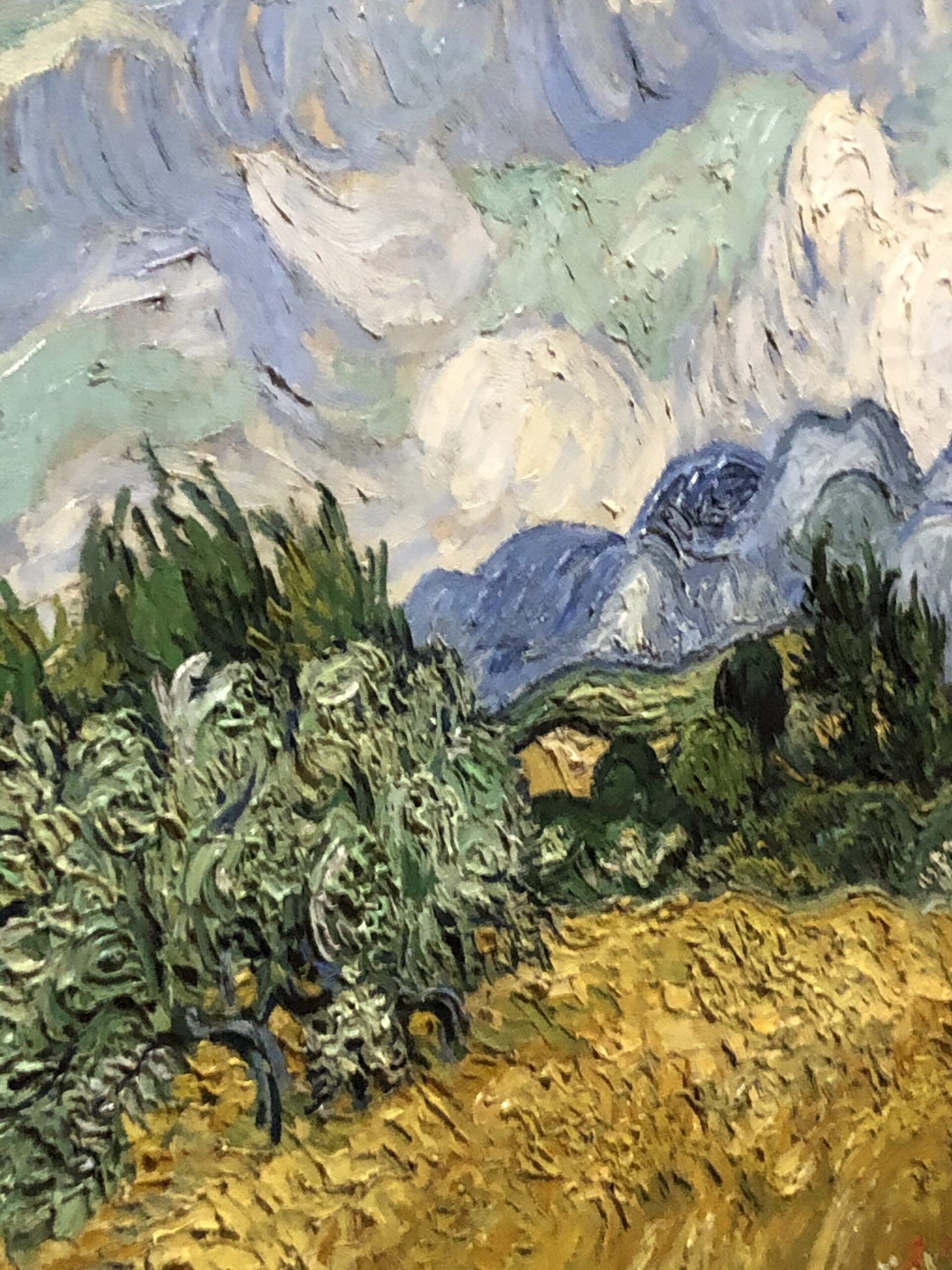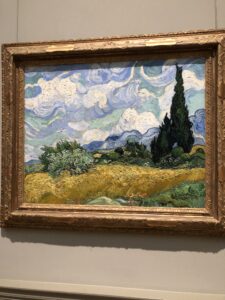
Wheat Field with Cypresses, Vincent Van Gogh, 1889

Beyond his amazing use of color, for me Van Gogh’s work stands out because of his texture – the layers and layers and swoops of paint in his work. Which is why one really needs to see the work in person to take it all in. Not on a postcard or poster, which inevitably rob any piece of its texture, movement, and deep colors. I was lucky to see Wheat Field with Cypresses at the Metropolitan Museum of Art in early December. It’d been several years since I’d experienced this one, and I again noticed the glorious three-dimensional swoops, curves, strokes, and pulses across the work. Given the artist physically moved this piece into being, shaping gobs of paint to then harden and keep his vision alive, it feels like a bridge directly back to the moment the work was created, when you can inch up to the piece and see and feel that movement. It’s still alive and pulses with the artist’s energy.
These qualities are part of what sets apart physical and digital artworks. Just as live performance gives an audience the literal breath, sweat and muscle of the performers, live visual and sculptural arts give us the movement, energy and intention of the artist, in ways digital work on a screen never will.